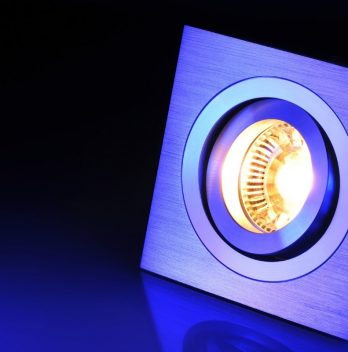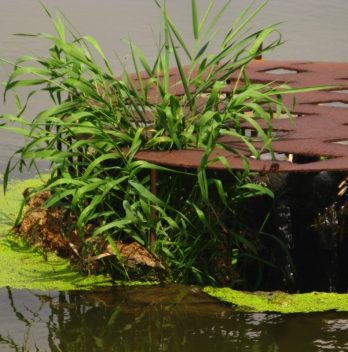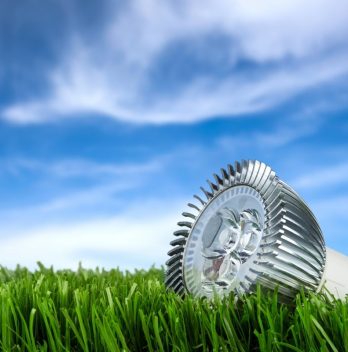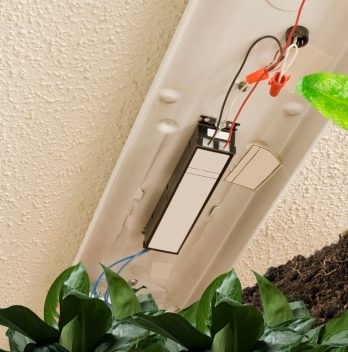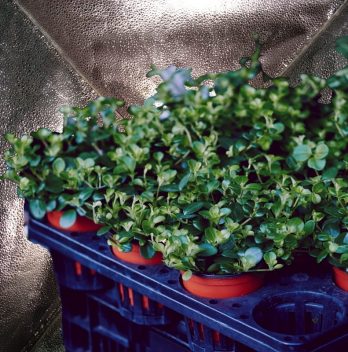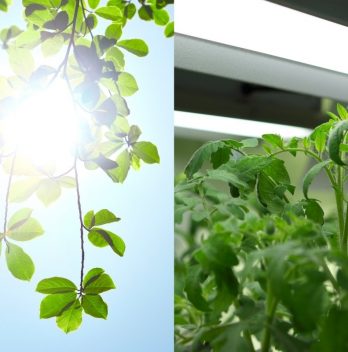Are you wondering if COB (Chip On Board) LEDs are better for growing plants than other types of LED? You’ve probably heard of different talks on how COB LED grow lights are one of the best in the market. But is this really true?
Well, it is true that COB LED lights offer some great advantages to growing plants. COB LED lights are definitely better than normal LED and some other types of LED because they offer more diodes and better lumen.
Let’s take a look at some information on COB LED light, their features, and many more. So keep reading to learn more info.
What Is A COB LED?
The manner in which LED diodes are packed together is generally known as a chip on board (COB). They are the new LED technology and are packed together to form a single and powerful light source.
A lot of tiny LEDs are arranged side by side of each other on a substrate to form one single module. Thus, they are packed together to give a single and highly powerful light source.
Generally, there are two types of LED lights and they are chip on board, COB, and the surface mount diode, SMD. Just like COB LED lights are great for growing, SMD LED lights are also fine. Both devices have their benefits. But let’s find out if COB LEDs are better than other types of LED.
What Is SMD Light?
Before we look into if COB LEDs are better, let’s take a look at the surface mount device. Surface mount device SMD is the most common type of LED light sold in the market. The LED chips are merged to form a print circuit board (PCB) which is established on a flat object that is rectangular in shape.
SMD has the ability to accommodate 3 diodes on the same chip and it can work with up to 6 contacts. It can also work with different colors and can create any color by adjusting the output level from each diode on the chip.
Are COB LEDs Better? Advantages Of LED COB
Here are some benefits you stand to gain growing with COB LED lights:
- Highly Efficient: Using COB LED lights to grow for your indoor growing plants are better because they offer more input power. Thus, you get better efficient input with lesser power consumption.
- Excellent Light Spectrum For Plants: They are available in different colors. Thus, they will offer your plants the right spectrum for your plants‘ growing needs.
- Deep Plant Canopy Penetration: COB penetration goes very deep and will even penetrate far beneath your plants’ canopy. This is thanks to their large LED chip that is more powerful compared to a single diode.
Phlizon CREE Cob Series 1000W LED Plant Grow Light Full Spectrum Indoor Plants
- Better Light Density: Their tightly packed small diodes allow them to offer much better and higher light density.
- Higher Light Speed: Unlike other smaller light fixtures that need to spreads out from a central point, COB will cover the plants more evenly. This is because COB lights are arranged apart on a large fixture thereby encouraging better light speed that will cover your plants evenly.
- Minimal Heat: COB lights are known to emit lower heat making them safe to be placed close to plants.
Disadvantages Of COB LED Light
The disadvantages of using COB LED light are not so much. So let’s look at their disadvantages:
One major disadvantage of using COB LED lights is that if one of the lights fails or spoils, you would have lost that particular or entire fixture. Now, if you were making use of the only COB LED lights for your entire to grow space, one failed COB light means a large portion of light has been lost. This is because it will affect a large part of your light.
Are COB LEDs Better: COD Vs. SMD LED Light
Both COB and SMD LED lights are great. However, let’s look at how both advantages over the other:
- More Diode: Both COB and SMD LED lights have multiple diodes. However, COB chips have up to 9 or more diodes while SMD has 3 diodes on a single chip. Thus COB lights will offer more light intensity, thereby making them more effective.
- Efficiency: The efficiency of these two LEDs works at various rates and that’s because they are built with different features. Talking about SMD, the efficiency is not so great but it will still get the job done. COB on the other hand will offer your garden optimal productivity. Thus, making them an excellent option for plant growing requirements.

- Color Temperature: The color temperature in SMD is more flexible as there is a possibility of changing colors. It offers varieties of colors because of the primary color used in SMD. COB on the other hand does not offer color change flexibility. They are built to adhere to a single color temperature.
- Affordability: Generally, LED lights are cost-effective and are more durable. LED lights also consume minimal energy, thus saving you on the energy bill. Thus, both SMD and COB are affordable. However, if we want to look at it from the manufacturing cost, SMD will be more costly than COB. The material cost for SMD is around 15%, while COB material cost about 10% of the manufacturing cost.
- Brightness: The lumen generated by the chips will greatly depend on the brightness. SMD LED makes use of about 50 to 100 lumen per watt. COB works with a higher lumen and the least value is 80 lumen per watt. Thus COB LED lights give more brightness.
FAQ’s
What are the problems with COB LED’s?
Some people feel that COB LED lights are one of the worst types of light for growing plants.
The problem with COB LED lights is that they only emit light in one direction. This means that all of the light that is emitted is right at your plants.
In fact, it is possible that every single ray of light that comes out of your COB LED light will be hitting your plant. This means that all of the light energy that comes out of the COB LED light is wasted. One way to look at this is that it is like trying to grow plants in an aquarium. It is impossible to get enough light into the aquarium because all of the light that is coming in is hitting the glass. If you were to move the plants out of the aquarium then you could see the full effect of the light. You would see that the plants were getting more light than they ever did in the aquarium. There are many other disadvantages to COB LED lights. They do not emit enough light to grow plants. They are expensive and they use a lot of energy. COB LED lights are also very loud.
How do you choose between COB LED lighting and traditional incandescent or halogen lights?
Well, that’s where it gets tricky. So if you’re looking for an LED light to replace your old light, here are some things to consider: Does it need to be bright? You don’t want a super bright light, because the cost is just going to be astronomical. If you can get away with a 50W or 75W light, that will usually be the best bet.
How long do COB LEDs last?
The lifespan of a COB LED is typically measured in years, not months. For example, the Cree XP-E2 is rated for 5,000 hours. It is also designed to have a very high lumen output (2700 lumens) with an average CRI of over 90. However, the lifespan is more than likely going to be shorter than what is stated on the product label.
Are COB LEDs Better: Final Thoughts
On our final thoughts on if COB LEDs are better; we would say both COB and SMD LED lights are great for growing. This is because LED lights are generally superior compared to other types of light.
However, we have seen that COB stands out in terms of its brightness and other great features they offer.

Eunice is an enthusiastic gardener with a passion for growing beautiful flowers. She loves nothing more than spending time in her garden, tending to her plants and enjoying the outdoors. Eunice has been gardening for over 15 years and has developed a unique style of landscaping that is both practical and aesthetically pleasing. She is especially fond of growing roses and enjoys experimenting with different varieties and colors. Eunice takes great pride in her garden and often shares the fruits of her labor with friends and family. In her spare time, she enjoys reading gardening magazines and attending local horticulture events. Eunice is passionate about her hobby and is always eager to share her knowledge and experience with others.

